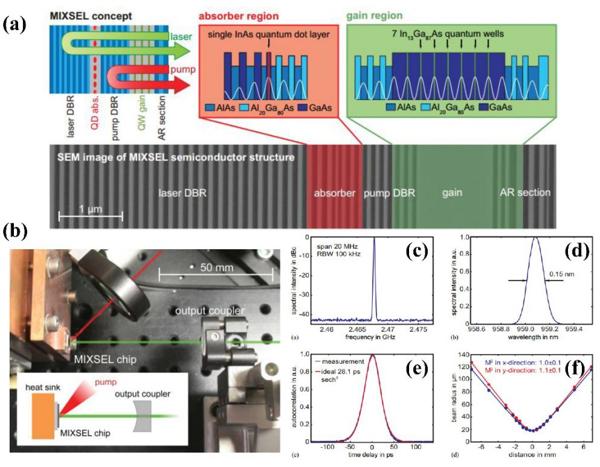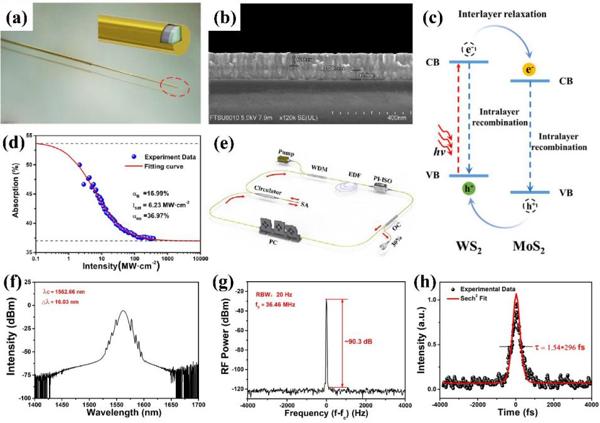As one of the greatest inventions in the 20th century, the development of lasers has gone through nearly 60 years since the first demonstration of coherent light generated from a flashlamp-pumped ruby crystal. It was not until the 80's that stable passive mode-locking with femtosecond pulse was demonstrated using a dye saturable absorber in a laser cavity. The development of semiconductor epitaxy technology and the semiconductor bandgap engineering make semiconductor saturable absorber mirrors (SESAMs) the hottest candidates for passive mode-locking. As strong contenders for SESAMs, low-dimensional nanomaterials (LDMs) have already been widely applied in the ultrafast laser systems. In this paper, we review the fundamentals of the most widely studied saturable absorbers including semiconductor saturable absorber mirrors and low-dimensional nanomaterials. Then, different fabrication technologies for saturable absorbers and their ultrafast laser applications in a wide wavelength range are illustrated. Furthermore, challenges and perspectives of saturable absorbers are discussed and presented.
Pauli-blocking effect can explain the saturable absorption phenomenon in a micro-level. When light interacts with a nonlinear optical material, electrons on the valence band absorb the incident photos and transit to a higher conduction band. For low incident intensity, most of the photos are absorbed, hence, resulting in low transmission. Whereas, under high incident beam intensity, the conduction band is full with electrons and cannot accept more electrons due to Pauli blocking effect. Consequently, most of the photos transit through the material resulting in high transmission. The basic mechanism for mode-locking can be easily understood by considering SA as a passive optical modulator whose absorption (loss) is intensity-dependent, which can be described by a two-level model:
where is the modulation depth (saturable loss), non-saturable loss and the saturation intensity (required intensity to reduce the absorption by 0.5).
After nearly a decade of efforts, SESAM mode-locked thin-disk lasers have pushed the pulse energies up to more than 80 μJ at MHz repetition rate without additional amplification and the average output power has been scaled to 350 W with 39 μJ pulse energies based on the Yb:YAG thin disk gain material. Monolithic integration into external cavity surface emitting laser (MIXSEL) integrates both the gain and the absorber within one wafer to improve the integration level so that stable self-starting mode-locking can be achieved in a simple straight cavity. With the progress in quantum dot SESAMs, the MIXSEL allowed the average output power to increase to 6.4 W. The schematic design and scanning electron microscope (SEM) image of the MIXSEL layer stack is given in Figures 1(a) and (b). The straight laser cavity with only two components has generated 28 ps pulses with 2.5 GHz repetition rate at 959 nm central wavelength [Figures 1(b)-(e)]. Lately, a new record was obtained by optimizing the gain structure and thermal management that the MIXSEL achieved a pulse duration of 144 fs at a center wavelength of 1033 nm with a pulse repetition rate of 2.73 GHz.

Fig. 1. Optically pumped high-power MIXSEL.
Low dimensional nano materials can be easily integrated into optical components, which is conducive to the realization of all-fiber mode-locked lasers. Inkjet printing provides a scalable craftsmanship that enables mask less patterning with high resolution on flexible substrates. M. Zhang's group also reported an inkjet-printing BP-SA integrated ultrafast pulse fiber laser. Stretched pulses operating at 1555 nm are generated through intracavity dispersion management with the pulse duration of 102 fs. Additionally, SAs fabricated by magnetron sputtering deposition (MSD) technique has been proved for stable high-energy soliton mode-locking at 1.5 μm and 2 μm. After that, the WS2-MoS2-WS2 superlattice structure SAM was fabricated directly on the fiber end face enlightened by QW-ESAMs, and the self-starting mode locking with femtosecond pulses were realized. (Fig. 2 ).

Fig. 2. WS2-MoS2-WS2 heterostructure saturable absorber mirror for mode-locked fiber lasers.
Nowadays, SESAMs have been commonly adopted in commercial mode-locked laser systems due to their validity and reliability at specific wavelengths. Nevertheless, there is still a lack of products in the mid-infrared band (especially over 3 μm). Studying on a serious of novel LDMs mode-locking have been reported. However, there are glaring problems such as poor fabrication controllability and repeatability, mode-locking performance degradation for a long-term operation which should not be neglected. All these problems should be further resolved.


